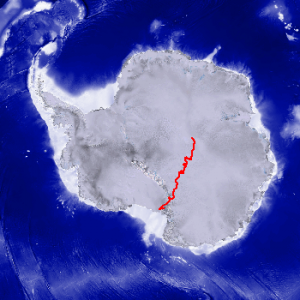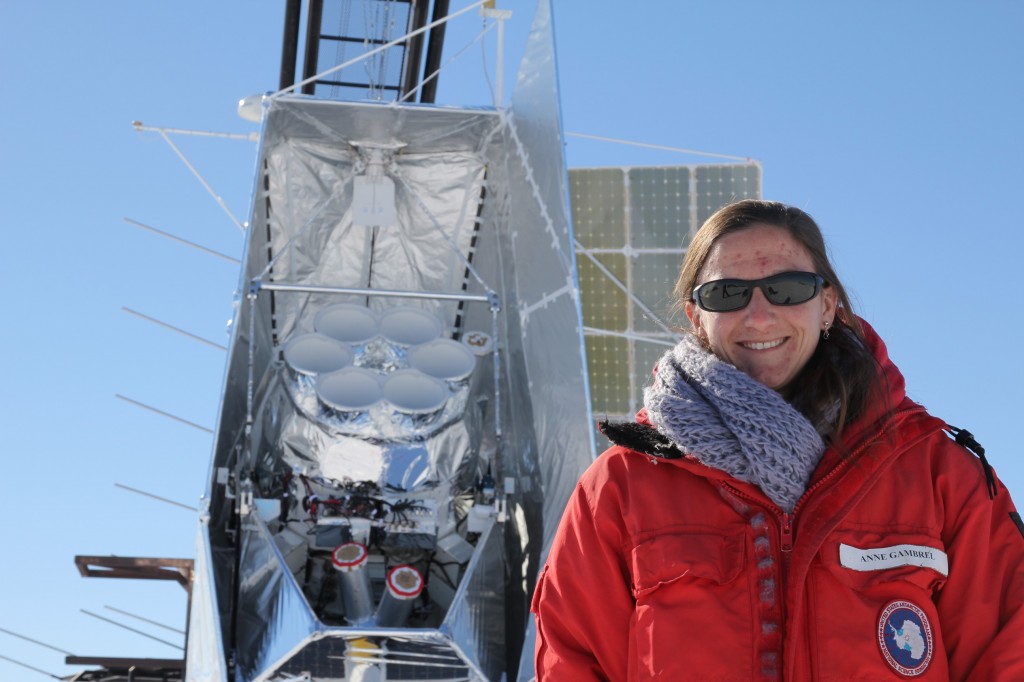SPIDER has now been at float for a little over a week. The payload has been very slowly wandering south, a different trajectory than you’d usually expect for a Long Duration Balloon (LDB). Normally they make circular trips around the continent, but SPIDER is doing her own thing, wandering in an approximately straight line.
While SPIDER was in our line of sight, we could communicate with the payload with high bandwidth — it was almost no different than commanding and data streaming on the ground. For those first couple of days, we got to make tweaks and get fast feedback and got all the systems in nominal working configuration.

SPIDER’s progress on Jan. 8, 2015. SPIDER launched from near McMurdo Station at the lower left of the continent.
The change to over the horizon telemetry was stark. Now, our standard operating mode is through an Iridium (satellite) link. This link provides us with a data packet approximately the size of a text message every 15 minutes, providing us with a few snippets of temperature data, pointing information, and system states that inform us only about gross health of the system. We can also give commands through this link, although commands can take up to a minute or two to get to SPIDER, and then you have to wait up to 15 minutes to get a new packet to confirm that your command went through.
I was very nervous before flight about this limited information, but it has in fact been quite sufficient. SPIDER is boring. It is just working. It’s a great position to be in, especially since there are remarkably few knobs you can tweak to fix anything now that it’s up there!
Once a day, we get to turn on our high bandwidth antenna and get data streams and fast commanding. We can get about 20 minutes of compressed data for about 80 detectors (out of SPIDER’s 2000 detectors) during this high bandwidth period, which means that we get to spend the whole next day obsessing over this tiny data set and seeing what we can learn from it.
And let me tell you, analyzing real CMB data is awesome. We have a running joke in SPIDER about what qualifies as “science”. We’ve done a lot of experimental physics that very much does not feel like science, but a lot more like grunt work or art and crafts. Without a doubt, we are now definitely doing science, and it is the coolest thing I’ve ever done. I can’t wait to have all that data at my finger tips once we get our hard drives back!















